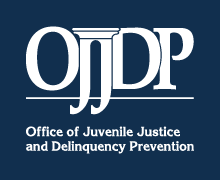Adolescents at risk
How Should We Identify and Intervene With Youth at Risk of Joining Gangs? A Developmental Approach for Children Ages 0-12
What Should Be Done in the Family to Prevent Gang Membership?
How Can We Prevent Girls From Joining Gangs?
Race and Ethnicity: What Are Their Roles in Gang Membership?
Changing Course: Preventing Gang Membership, Conclusion: An Invitation To Contribute to Gang-Joining
An ethnographic adolescent life-course of social capital within urban communities, schools and families and the effects on serious youth violence among young at-risk African-American males
The Influence of Social Surroundings on Juvenile and Criminal Justice Involvement of 17-Year-Olds Transitioning from Foster Care to Adulthood: A Longitudinal and Life-Course Approach
The Association Between Intimate Partner Encouragement of Alcohol Use and Alcohol Use Among Females Formerly Involved in the Juvenile Justice System
'What Works?' Revisited Again: A Meta-Analysis of Randomized Field Experiments in Individual-Level Interventions
Responding to Intimate Partner Violence Related Strangulation Integrating Policy, Practice, and Rese
This webinar examines the problem of Intimate Partner Violence Strangulation and an innovative response policy. The presentation will include an overview of the nature and extent of strangulation, its dangers, and adverse medical consequences followed by a review of a Strangulation Ordinance in Burleson, Texas that mandates extensive training for first responders and a city-wide response protocol for strangulation detection and investigation, documentation of strangulation signs and symptoms, medical assistance, and service referrals for strangulation survivors.
See the YouTube Terms of Service and Google Privacy Policy
Evaluation of Reach & Rise® Program Enhancements to Cognitive Behavioral Mentoring, Technical Report
Factor Structure of the Difficulties in Emotion Regulation Scale among Early Adolescents: Results from the Adolescent Brain Cognitive Development Study
Beyond Monolithic Threat: Understanding Risk Typology in Court-involved Black Male Youth
Familial Pathways to Polyvictimization for Sexual and Gender Minority Adolescents: Microaffirming, Microaggressing, Violent, and Adverse Families
Older Opposite-Sex Romantic Partners, Sexual Risk, and Victimization in Adolescence
Nonfatal Firearm Injury and Firearm Mortality in High-risk Youths and Young Adults 25 Years After Detention
Intersecting identities and adolescent depression: Patterns of depressed mood and anhedonia in the past decade
Perceived sleep quality predicts aggressive offending in adolescence and young adulthood
New Perspectives on Marijuana and Youth: Abstainers Are Not Maladjusted, but Lone Users Face Difficulties
Driving Down Gun Violence, Part 1
Three LEADS Scholars serving in different law enforcement agencies and positions discuss their experiences with identifying and implementing evidence-based interventions to reduce gun violence. NIJ Senior Advisor Dr. Tamara Herold hosts this conversation with guests Police Chief Cecilia Ashe (Milford Delaware Police Department), Chief of Staff Lieutenant Matthew Barter (Manchester, NH Police Department), and Analytical Services Manager Mr. Jason Schiess (Durham, NC Police Department).




